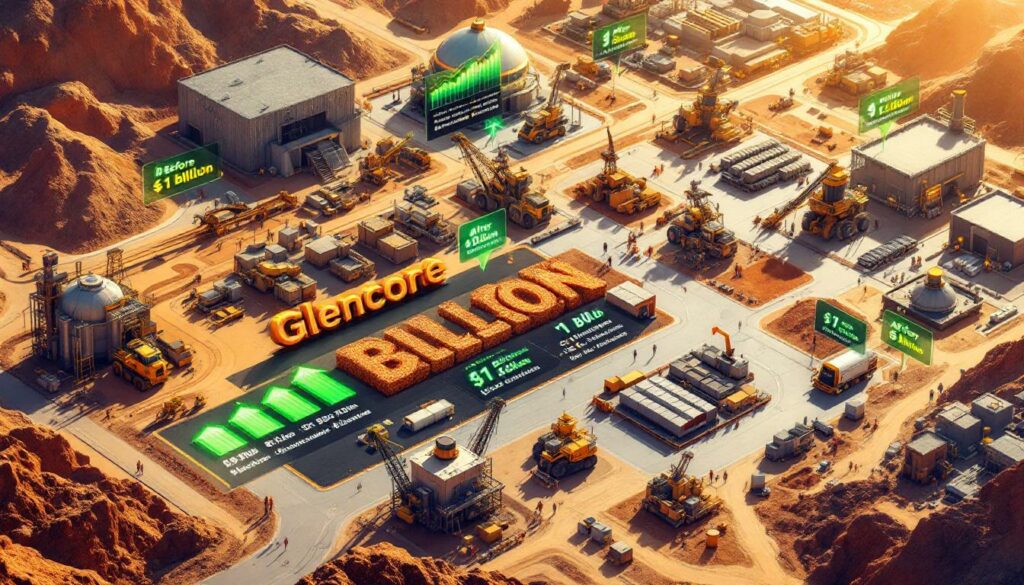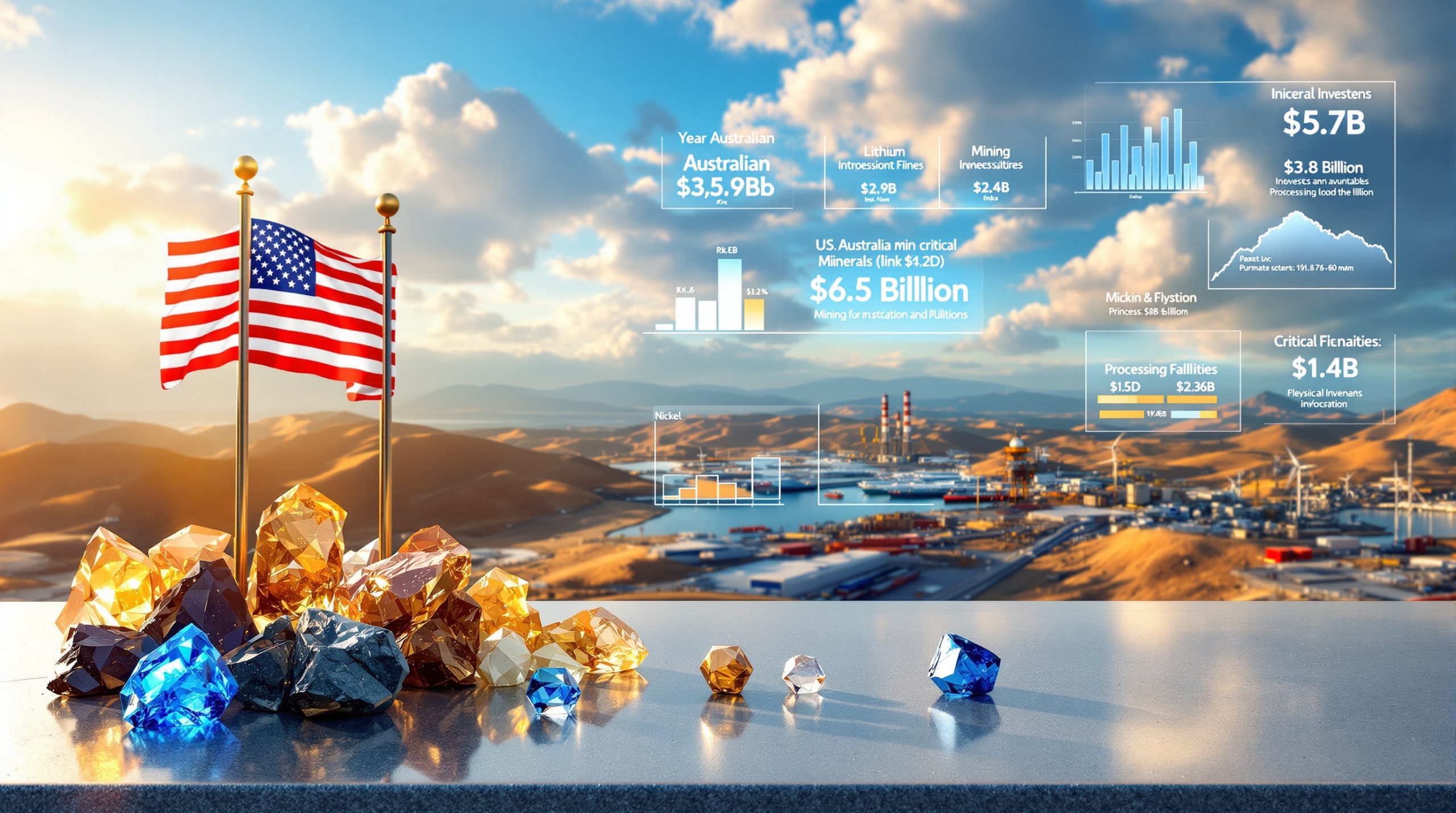What Are the Main Drivers Behind Glencore's Cost Savings in the Latest Half-Year Review?
Glencore's half-year review for 2025 highlights a sweeping transformation effort across its operations, revealing a robust focus on operational efficiency through substantial cost savings. As one of the globe's premier diversified miners and commodity marketers, Glencore has set in motion more than 300 targeted initiatives aimed at recurring annualized cost savings benchmarked against the 2024 cost base. According to public disclosures and earnings transcripts, Glencore's total identified opportunity stands at an impressive $1 billion, marking a strategic inflection point for the company amid a dynamic commodities environment.
Key areas targeted for cost reductions include:
- Streamlining of operating structures
- Energy usage optimization through modern management systems
- Reduced headcount and administrative outlays, focusing resources on high-impact roles
- Contractor and consumable cost cuts, enabled by renegotiated contracts and digital procurement
- Maintenance process improvements, leveraging predictive analytics and remote diagnostics
| Metric | Value | Timeline |
|---|---|---|
| Cost-saving total (annual opportunity) | $1 billion | By end-2026 |
| Number of initiatives | 300+ | Ongoing |
| Portion targeted in 2025 | >50% | By end-2025 |
Key Insight
"Execution on these savings remains key given the steepness of the implied unit cost decreases, especially in copper." – Morgan Stanley Research
What Organizational Changes Support These Efforts?
Glencore has embarked on a sweeping organizational restructuring to streamline management and foster resource synergies. A standout move is the merger of its nickel and zinc operations into a single division. This consolidated structure now oversees all custom metallurgical processing assets, effectively eliminating redundant roles, standardizing procurement, and promoting cross-commodity technical expertise.
Case Study—Industrial Synergies:
For example, by combining nickel and zinc procurement under unified leadership, Glencore is achieving economies of scale—unlocking bargaining power, reducing duplicated processes, and sharing best practices across portfolios. These operational synergies directly translate to lower unit costs and heightened asset productivity, integral to delivering on aggressive cost-saving targets.
How Are Glencore's Production Strategies Evolving Amid These Savings?
Have Production Volumes Been Impacted or Optimized?
To balance profitability with operational discipline, Glencore's production strategy has pivoted toward a more nuanced, market-responsive approach. In 2025, copper production is forecast to reach its cyclical nadir, with a clear pathway back to 1 million tonnes annually by 2028. The company has embraced selective curtailment—temporarily cutting or throttling output in certain segments (such as copper/zinc smelting, ferrochrome, and coal)—to mitigate margin pressure during periods of weak commodity prices.
Key site-specific insights:
- Collahuasi, Antamina, Antapaccay, and KCC mines were notably impacted in H1 2025 by mine sequencing, lower ore grades, water shortages, and strategic cobalt stockpiling.
- However, all these operations expect a substantial rebound in H2 2025 as planned interventions take effect and market conditions stabilize.
Zinc and coal assets, meanwhile, are operating at or near planned throughput levels, supporting the full-year output forecasts.
Glencore's copper output in the first half suffered from mine sequencing, grade declines, water shortages, and cobalt stockpiling—particularly at Collahuasi, Antamina, Antapaccay, and KCC. These sites anticipate a performance rebound in the second half of 2025.
What External and Internal Risks Are Being Managed?
Glencore's half-year review flagged several internal and external risk factors that shaped both its operational decisions and financial results:
- Market Headwinds: Persistently low coal prices and subdued copper output compressed EBITDA and earnings, though Glencore's pre-emptive planning softened the blow.
- Operational Adjustments: The company's quick response—curtailing uneconomic activity and realigning cost structures—demonstrates real-time management in an unpredictable market environment.
"Weak coal prices and low copper production were headwinds in the first half, but we see value at current levels." — Deutsche Bank Group
What Do Glencore's Latest Financial Metrics Reveal?
Key Financial Performance Indicators (H1 2025)
Glencore's H1 2025 financials vividly illustrate the interplay between external market forces and internal cost management. Despite prevailing headwinds, the company remains committed to robust capital discipline and enhanced shareholder returns.
| Financial Indicator | H1 2025 Outcome | YoY Change | Context |
|---|---|---|---|
| EBITDA | $3.8 billion | -17% | Impacted by weaker commodity prices and lower output |
| Net Debt (as of June 30) | $14.5 billion | +$3.2 billion | Driven by timing, M&A activity, and cash flow cycles |
| Short-term Debt Guidance | Meaningful deleveraging expected by year end | Improved H2 cash generation forecast | |
| Viterra Sale Proceeds | $900 million in cash | N/A | Plus 16.4% shareholding in Bunge (valued at $2.63B) |
| Shareholder Returns (2025) | Up to $3.2 billion | Announced | Includes $1B buyback and base dividend |
Share Buyback & Dividends
- Up to $1 billion in share repurchases authorized for completion by February 2026.
- Base dividend of $0.05 per share declared for 2025.
- Total shareholder returns for the year set at up to $3.2 billion, enhanced through disciplined asset sales and free cash flow deployment.
Marketing Segment Earnings
- Updated annual EBIT guidance for Marketing: $2.3–$3.5 billion, with the midpoint lifted to $2.9 billion—a notable 16% rise from previous outlooks—a direct reflection of optimized trading and risk management performance.
"Second half should be better," noted Jefferies UK Metals & Minerals, anticipating a turnaround in cash flow and net debt metrics following asset sales and operational improvements.
How Does Glencore's Corporate Strategy Position It for Future Value Creation?
Glencore's forward-looking strategy is underpinned by its sheer scale, global market coverage, and powerful asset flexibility. The group manages a portfolio extending across 60 different commodities and over 50 international marketing offices, leveraging a workforce of more than 150,000 employees and contractors in upwards of 30 countries.
Flexibility, Global Scale, and Market Opportunity
Key pillars of Glencore's corporate approach:
- Commodity Marketing Leadership: Adaptive supply chain visibility and real-time market data provide a strategic edge in commodity trading.
- Workforce & Geographic Reach: Deep local expertise ensures operational resilience in diverse regional environments.
- Strategic Asset Base: Modularized operations and scalable capital deployments allow for rapid reaction to shifting global market trends.
Geopolitical and Resource Supply Trends
With resource nationalism, evolving regulations, and changing environmental standards altering the commodities landscape, Glencore's management is keenly focused on medium- and long-term trends:
- Expected global under-investment in new supply is likely to drive tighter markets in copper, nickel, and battery minerals.
- Management projects that "the scale and pace of required resource development will struggle to meet the demand projections for such materials into the future."
"We are well placed to participate in bridging this gap, through the flexibility embedded in our marketing and industrial businesses to respond to global needs." — Gary Nagle, CEO
What Are Analysts and Experts Saying About Glencore's Mid-Year Position?
Key Industry Voices and Their Perspectives
- Morgan Stanley Research: Reiterates the necessity for precise execution on cost initiatives to ensure copper segment competitiveness.
- Deutsche Bank Group: Acknowledges current macroeconomic pressures but maintains a positive value outlook for Glencore's shares.
- Jefferies UK: Foresees a stronger performance in the second half, buoyed by strategic asset divestitures and aggressive deleveraging.
Furthermore, the company's focus on mining transformation positions it well for future market cycles. Industry analysts note that despite current challenges, Glencore's adaptation to data-driven mining operations provides a competitive advantage.
All data and financial performance references are from Glencore's 2025 half-year report, verified against earnings presentations and leading industry commentary.
FAQs: Glencore Cost Savings Half-Year Review
How much cost savings has Glencore identified, and by when will it be realized?
Glencore targets $1 billion in annualized recurring cost savings, with over 50% of these savings expected by the end of 2025 and the full program completed by the end of 2026.
Will production cuts continue, or can we expect a rebound?
Targeted, temporary production reductions—especially in copper—are designed to align capacity with profitable market windows. Copper output is expected to recover, with the company guiding back toward one million tonnes by 2028.
How do recent financial moves impact shareholders?
Shareholders stand to benefit from up to $3.2 billion in returns in 2025, driven by both a $1 billion buyback and consistent dividends, supported by proceeds from key asset sales such as Viterra.
Conclusion: What Is the Outlook for Glencore Post-Half-Year Review?
The relentless drive for cost optimization and performance efficiency at Glencore is delivering tangible progress, with aggressive milestones on track for significant completion by year-end and full program delivery by 2026. Shareholder returns remain a strategic priority, underpinned by disciplined capital allocation and successful asset sales—even in challenging macroeconomic conditions.
Dynamic operational agility, world-class market reach, and a disciplined forward-looking strategy place Glencore in a commanding position to weather volatility, capitalize on resource scarcity trends, and deliver enduring value into 2026 and beyond. The company's approach to mining consolidation trends and investment in critical minerals transition further positions it well within broader industry evolution trends.
Further Exploration:
For a deeper dive into industry cost trends and mining market dynamics, visit Reuters' coverage of Glencore's cost-saving initiatives for expert analyses and timely sector updates.
Ready to Capitalise on the Next Major Mineral Discovery?
Discover how real-time alerts on significant ASX mineral discoveries can give you a market-leading edge with Discovery Alert's proprietary Discovery IQ model, turning complex announcements into actionable investment opportunities. Explore historic examples of exceptional returns from major discoveries by visiting our dedicated discoveries page and begin your 30-day free trial today.




